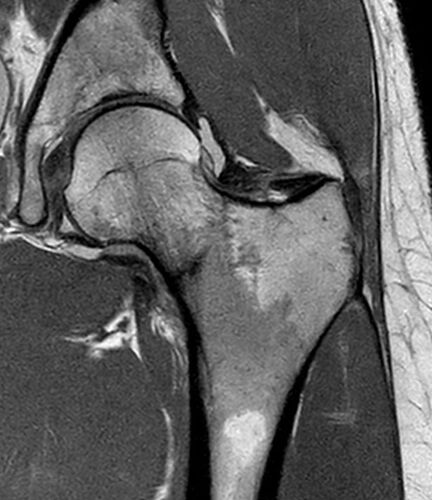“Stress fractures of the femoral neck can occur in younger, active patients or elderly, osteoporotic patients and may be located on the compression or tension side of the femoral neck. In the more common compression stress fractures, the injury begins at the inferior cortex of the femoral neck. The tension stress fracture starts in the superior cortex of the femoral neck and may advance across the femoral neck as a fracture line perpendicular to the axis of the femoral neck. Management depends on the fracture location. Nondisplaced stress fractures of the femoral neck localized on the compression side spanning less than 50% of the femoral neck may be treated nonoperatively with protected weight-bearing and close observation for 6–8 weeks. Compression sided fractures spanning more than 50% of the femoral neck require internal fixation. Nondisplaced fractures on the tension side of the femoral neck are at increased risk for fracture displacement and require internal fixation. Operative fixation consists of percutaneous placement of cannulated screws.”
